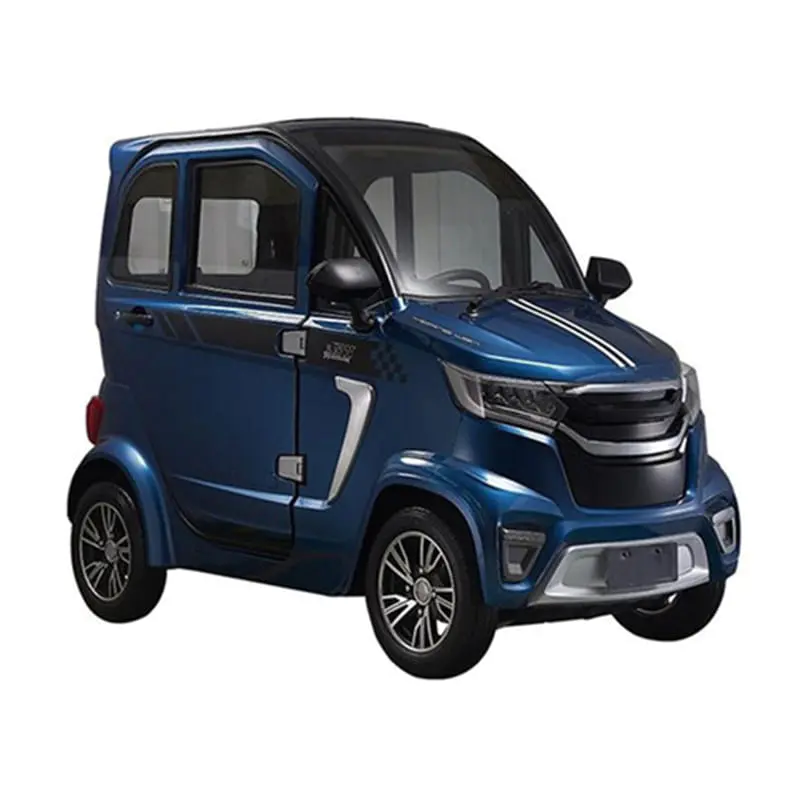+86-13857999108
As urban mobility continues to evolve, electric scooters have gained popularity as a convenient and eco-friendly mode of transportation. Among the various types available, the Electric Cabin Scooter stands out for its distinct features compared to a regular e-scooter. Understanding what sets the Electric Cabin Scooter apart can help users make informed decisions when choosing an electric vehicle that fits their lifestyle and transportation needs.

At a glance, a regular e-scooter is a compact, lightweight vehicle designed for short-distance travel. It usually consists of a handlebar, a deck for standing, and two wheels. On the other hand, the Electric Cabin Scooter features an enclosed cabin that provides protection from weather elements such as rain, wind, and cold temperatures. This structural difference offers a new level of comfort and usability for users who require more than just basic mobility.
One notable distinction is the design and build of the Electric Cabin Scooter. Unlike regular e-scooters that are primarily open and exposed, the cabin creates a semi-enclosed space that can shield riders from environmental factors. This feature can be especially beneficial in regions with unpredictable weather or for commuters who prefer a more sheltered ride. The enclosure may also offer some sound insulation, making trips quieter and more comfortable.
The safety aspect is another area where the Electric Cabin Scooter differs from a regular e-scooter. The enclosed structure can offer additional protection in case of minor accidents or collisions. While neither vehicle replaces the need for protective gear, the cabin can provide a physical barrier that might reduce exposure to external hazards. This added layer of safety can appeal to users who seek a more secure option for their daily commute.
In terms of usability, the Electric Cabin Scooter often includes features that enhance convenience. Many models offer storage compartments within the cabin, allowing riders to carry bags, groceries, or personal belongings securely. This contrasts with regular e-scooters, which typically require external backpacks or attachments for carrying items. Having storage integrated into the vehicle itself can streamline trips and reduce the need for additional accessories.
Another difference lies in the seating arrangement. Regular e-scooters are generally designed for standing riders, which may limit comfort during longer rides. The Electric Cabin Scooter, however, usually comes with a seat inside the cabin, providing a more relaxed riding posture. This seating option can make longer commutes less tiring and more accessible to a wider range of users, including those who may have difficulty standing for extended periods.
The Electric Cabin Scooter may also have a higher weight and size compared to regular e-scooters due to its cabin structure. While this might reduce its portability somewhat, the trade-off is improved stability and comfort. Users who prioritize a smooth and protected ride might find this difference worthwhile. However, for those who need an easily foldable or ultra-light vehicle, a regular e-scooter could be more suitable.
Battery capacity and range are areas where these two types can also differ. The Electric Cabin Scooter often requires a larger battery to support its weight and enclosed features such as lighting, heating, or ventilation systems. This can result in longer travel distances on a single charge, making the cabin scooter a practical option for commuters covering moderate distances. In comparison, regular e-scooters generally have smaller batteries tailored for shorter urban trips.
The control system and dashboard of the Electric Cabin Scooter may be more sophisticated compared to regular e-scooters. With an enclosed cabin, there is more space for integrated displays, controls, and sometimes even smartphone connectivity. This can enhance the user experience by providing real-time information on speed, battery status, and navigation without distracting the rider. Regular e-scooters tend to have simpler control panels due to their limited size.
From an environmental perspective, both the Electric Cabin Scooter and regular e-scooters share similar benefits in reducing emissions and noise pollution compared to gasoline-powered vehicles. However, the cabin scooter’s ability to protect riders in various weather conditions could encourage more frequent use, potentially resulting in increased reductions in car usage for short trips. This aspect supports sustainable urban mobility by offering a viable alternative for daily transportation needs.





